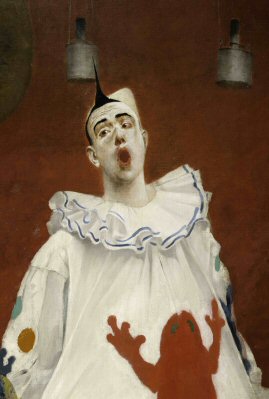Fernand Pelez: The Belle Epoque’s Parade of the Outcast

- SUBSCRIBE
- ALREADY SUBSCRIBED?
BECOME A BONJOUR PARIS MEMBER
Gain full access to our collection of over 5,000 articles and bring the City of Light into your life. Just 60 USD per year.
Find out why you should become a member here.
Sign in
Fill in your credentials below.
 If you have never heard of the French artist Fernand Pelez (1848-1913) you are not the first. His work on display until January 17, 2010, at the Petit Palais in Paris is a retrospective of his beginnings as a traditional, academic artist to his bold later works that resemble photography.
If you have never heard of the French artist Fernand Pelez (1848-1913) you are not the first. His work on display until January 17, 2010, at the Petit Palais in Paris is a retrospective of his beginnings as a traditional, academic artist to his bold later works that resemble photography.
These later works, which are the focus of the exhibition, are like photographs created with a paintbrush; these are eyes looking into an imaginary camera. The social themes of Pelez’s later paintings capture the realistic side of city life: the despair, fatigue, poverty, and death as well as those earning a living from the 1880s to the First World War.
Pelez’s early paintings begin with strong, deep colors of sumptuous fabrics or surroundings and legendary drama of religious stories where people look at the victim or up to sky. They transition to the muted colors of the street, the characters against the corner walls, the background ironic advertising, the characters looking at the viewer. The Petit Palais presents other painters with similar themes but whose characters seem less vivid, clear or haunting.
A graduate of the School of Fine Arts in Paris (l’École des Beaux-arts), Pelez first enters the Paris Salon in 1866. During the Belle Epoque he is an award winner at the Paris Salons: In 1876, third place; 1879, second and in 1880, first place. These medals allow him to annually enter and display his paintings at the Paris Salon without judgment by jury. This status permits a change in style as well. As long as he produces the classical themes that the city of Paris wants to buy for its museums (including the Petit Palais), city halls and churches, he is famous. However, as an artist of social realism, he produces what people want to forget because they see it every day: misery.
Pelez is a contemporary of Degas and Monet, Seurat, Toulouse-Lautrec, Bastien-Lepage, Ensor and the young Picasso. However, Pelez’s paintings document humanity in its natural state.
His attraction to the lesser known but very visible elements of society reflects society itself at the time; the haves and the have nots. Society’s advancements in couture and technology, its gaiety serve the upper classes of this golden era but are not on the radar of the immigrants: those from the country side of the Savoy mountains or Belgium, the working women, the war veterans, the children selling anything in the streets or ballerinas at the Opera changing from the dull and dark street clothes to their pearly white tutus.
Photos made in his studio in 1913, the year he died, preserve some lost works. The original no longer available, La Libellule (the Dragonfly) is a photograph of the painting. In a combination of two arts, it has a sense of having been a photograph all along as Pelez looks into the soul of his character. Through his well-preserved drawings and paintings, the Petit Palais brings this hidden away legacy to life.
Open this link to the Petit Palais website and watch the video of paintings presented at the exhibition.
FERNAND PELEZ, LA PARADE DES HUMBLES AU PETIT PALAIS
Musée des Beaux-Arts de la Ville de Paris Petit Palais – until January 17, 2010
Avenue Winston Churchill 75008 Paris
Open: 10 a.m. to 6 p.m. (closed Monday and holidays)
The Pelez exhibit is open Thursday until 8 p.m.
Admission: 9 euros, 7 euros, 4.50 euros; free for 13 and under
www.petitpalais.paris.fr: Fernand Pelez
In conjunction with this exhibit, a free concert “Concert Paris 1900” will be held Tuesday, December 22 at 3 p.m. in the auditorium.
Three musicians from the Orchestre National de France are performing a variety show from cabaret to opera. Reservations are unnecessary, but only 182 seats are available.
More in Bonjour Paris, Paris art exhibits, Paris art museums, Paris artists, Paris museums, Paris sightseeing, Paris tourism, Paris tourist tips


